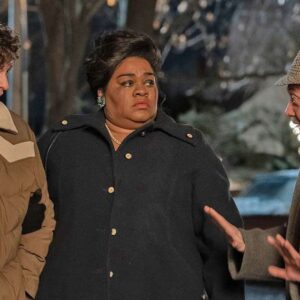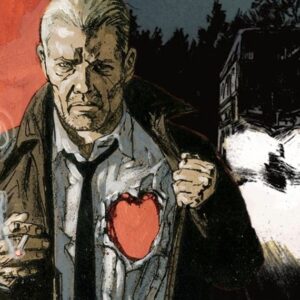Animated TV shows are in a unique position in that the quality of the visuals is reliant on art style rather than expensive cameras, and with that, these shows evolve and change over time. Animated TV shows originally had to be hand drawn, before technology and digital drawing revolutionized the process to make creating animated shows much quicker and simpler. However, despite many shows now being created digitally, they can still undergo changes and advancements even as a show progresses from one season to the next.
For older TV shows, many started out being hand-drawn before being updated and created digitally. Some other animation techniques have also become more prominent and resulted in a multitude of styles that creators employ when making a series. Some shows experiment with these styles, while others choose to update and improve their quality between seasons to better reflect the evolving talents of the creatives working on the series.
The Simpsons
1989 – Present

When a TV show of any kind has been going for the better part of 40 years, it naturally makes sense for the show to adapt and change. The Simpsons is going into its 36th season, and in the decades since it has been airing on TV, the style of the show has evolved and changed with new animators and updated techniques. The most noticeable difference can be seen between the pilot episode where the characters were first being explored and defined and the modern series, but the show also had other big shifts in its history.
Home Movies
1999 – 2004

Home Movies had a fairly small audience when it was first released in 1999, with the hand-drawn style being very simple and quirky. While the show ran for five years and the style remained largely the same, it is clear that the creatives working on the show refined their skills as they added shading, sharper lines, and other elements that made the quality appear much improved, regardless of simplicity. The show was also one of the first animated shows that popular voice actor H. Jon Benjamin appeared in before starring in Archer and Bob's Burgers.
Pokémon
1997 – 2023

Pokémon is one of the best examples of an animated series that has changed with the times. The show evolved over the years to become much smoother, better defined, and cleaner. The show inspired generations of fans and became one of the largest IPs in the world. Initially, Pokémon was inspired by the first gameboy games that were released in 1996, and now, as the games have evolved past their original green-tinted pixel art, they bear a much larger resemblance to the show.
Samurai Jack
2001 – 2017
Samurai Jack aired on Cartoon Network and had a lot in common with the typical style of shows on that network, but as the series developed, the style changed dramatically. Perhaps the most dramatic change came between the fourth and fifth seasons after the show had been off the air for almost 15 years. With many years of experience in between, the style shifted to become much darker and feature more cinematic shots. The series also employed artistic visuals, such as battle scenes in monochromatic tones to add drama and intensity.
Ben 10
2005 – 2014

Technically, Ben 10 was split into four different shows between 2005 and 2014, but each new series was a direct continuation of the previous one and the show wasn't rebooted and changed until 2016 with a brand-new origin story and art style for the series. Along with the shows switching over, the characters were aged up, and the style changed to reflect each new iteration. The biggest change came in 2012, with the introduction of Ben 10: Omniverse, which saw Ben partner up with a new ally and his cousin and Kevin head off to college.
Lupin The Third
1971 – 2021

Lupin The Third is a Japanese-animated show which has been around for over 50 years. Uniquely, the series has been broken up into seven parts which were released with large gaps in between, and the art style dramatically altered from season to season. Despite updating the art style, the characters have remained largely the same in the series, with the protagonists sporting the same outfits as the show evolved and changed. The progression and flow through different styles add a level of timelessness to the show that carries the franchise beyond any one season.
Archer
2009 – 2023

Archer showcases an incredibly unique art style for an animated series. With the characters drawn in a 2D format and then rendered into a 3D setting, it stands out for its unique innovation. And while style is a large part of the show's personality, there have been upgrades to how the show is made, with lighting and facial expressions drastically improving over time. In addition, the show has also become much more fluid and appealing, especially when it comes to the fast-paced action sequences.
Adventure Time
2010 – 2018

Early seasons of Adventure Time had their charm with the quirky designs of characters, but it was also flat, and some of the framing for scenes could be repetitive. As the show progressed, and especially when it moved over to Cartoon Network, the series began to play around with more dynamic shots. In addition, the characters were given more definition, shots were more detailed and the show took on a life of its own that would carry it through its remaining seasons.
Family Guy
1999 – Present

The adult animated series Family Guy had a similar journey in terms of quality and design to The Simpsons. Early seasons of the show had a rough style with little detail to define certain elements. When the show made the transition from standard definition to high definition, the jump in quality saw the characters becoming much more defined and sharp, as well as the backgrounds. This led to the show being able to incorporate many more visual jokes, which is a large part of what Family Guy has become famous for.
South Park
1997 – Present

South Park is renowned for the incredibly tight turnaround time of producing new episodes. However, while the style is simplistic and lends itself to animation that can be churned out quickly, the show started with a much slower and more involved process; hand drawing each scene. When the show made the switch to digital, the technology was used to replicate a simplistic style, which meant the show retained its quirky appeal but could be created much more quickly.







